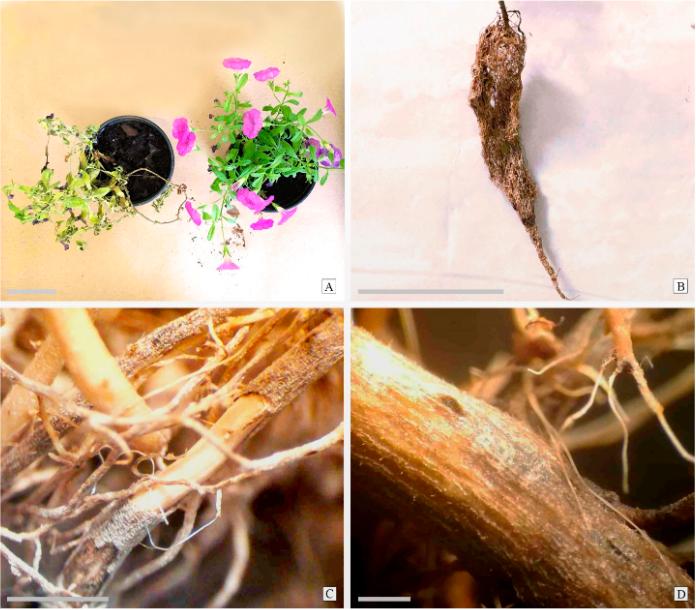Chilean Journal of Agricultural and Animal Sciences, Vol. 38, Nro. 2, 2022
Resumen
Calibrachoa (Calibrachoa hybrida, Solanaceae) is an annual flowering ornamental plant, which is widely used in landscape design. In October 2019, 5% of the plants grown in a greenhouse in Buenos Aires, Argentina, showed a sudden wilt characterized by chlorosis, loss of turgor, and root rot. The objective of this study was to identify the causal agent of the disease. Five morphologically identical isolates developed from the roots of wilting plants. One of the isolates was selected and identified using morphological and molecular markers, while its pathogenicity was confirmed by Koch’s postulates. The obtained results allow concluding that Ceratobasidium sp. AG-A (anamorph Rhizoctonia sp.) is the causal agent of the disease. To the best of the authors’ knowledge, this is the first report of Ceratobasidium sp. as pathogen of calibrachoa in the world.
Palabras clave:
ornamental plant, Rhizoctonia, fungus, wilt, rot
Wilt of Calibrachoa hybrida INTA 06575. A) Wilting (left) and healthy (right) plants (5 cm Scale bar); B) Discolored roots (5 cm Scale bar); C) Root with cortex and epidermis disintegration, and exposed vascular system (3 mm Scale bar); D) Sunken lesions on roots (0.4 mm Scale bar)
